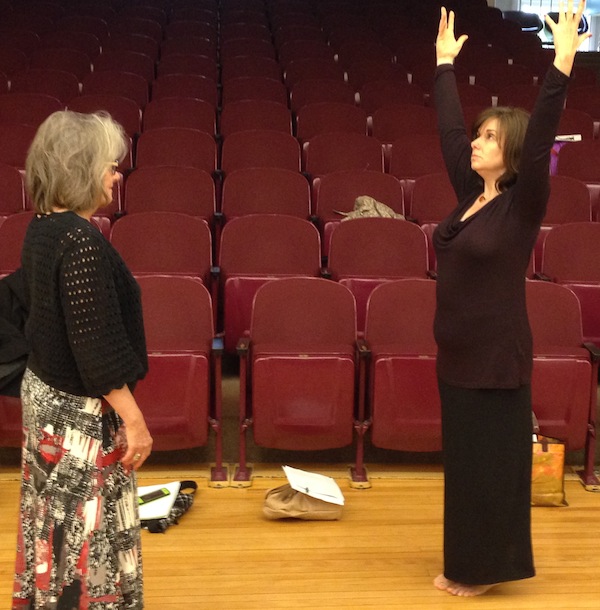A large circle of adults, most of them strangers to each other. They all listened carefully as movement therapist Michelle Joubert explained that she would help them “wake up” and become aware of their bodies in space and in relation to others. She put on some music, raised her arms and turned to the woman next to her, who had to come up with her own movement and pass it along.
Michelle is a licensed clinical professional counselor and board-certified dance/movement therapist who currently works with middle-school-aged children struggling with impulse control. She was presenting a workshop on Moving from Impulsive to In Control at the first-ever Creative Health! conference held recently at the University of Southern Maine in Gorham
The one-day conference was for therapists, medical professionals, and caregivers who wanted to learn more about the use of creative arts therapies in healthcare. It was put on by USM School of Music and organized by Kate Beever, a board-certified music therapist with a music degree from USM and a Master’s degree in music therapy from New York University. Through her practice Maine Music and Health, Kate works with people who have cancer, developmental disabilities, brain injury, depression or dementia.
Back to Michelle, who’s engaging her workshop participants in a lesson about stopping and holding still — kind of like musical chairs only when the music stopped, people had to freeze right where they were and think about what it felt like to be still.
- What body parts were difficult not to move?
- Could you freeze quickly or did it take a while to find your balance?
- What muscles felt tight?
- Did your eyes move? Your toes? Your fingers?
- Did you feel your heart beating?
- Could you feel your chest or belly move as you breathed?
- What muscles did you use to stay still?
Next, the group divided into pairs. One person timed how long his/her partner could hold still, watched for specific movements and mentioned it to the person. It’s amazing how often you might think you’re perfectly still, but you’re totally unaware that your toes or fingers are tapping or your eyebrows are twitching.
The purpose of the two “Freeze Frame” challenges was to begin to build a sense of stillness versus movement — to feel the tension in muscles and recognize the impulse to move that comes from within. “For some children who are constantly moving,” Michelle explains, “stillness can create a sense of control and help them relax. It teaches them to disrupt movement quickly when needed due to safety concerns or being out of control.”
Michelle ended the workshop with a lesson in blowing bubbles or at least pretending. Try it: Close your eyes and imagine that you have a big jar of bubbles. You are going to blow the biggest bubble you can using one breath. Dip your stick into the jar and take in a big deep breath. Now slowly breathe out so that you make one gigantic bubble. Doesn’t that feel good? Were you calm and in control?
I asked some of the participants what they got out of the workshop — besides obviously enjoying themselves and looking totally relaxed at the end.
It confirmed for me that just a little bit of movement can really help somebody find themselves. We can get so disconnected from our bodies that becoming even a little bit aware can be a good reminder. As we were doing the freeze frame, I noticed how hard it was to hold my freeze — I’ll definitely bring that understanding to my work.
Nora, behavioral specialist
One concrete thing that I learned was teaching people how to breathe can be challenging. The idea of using bubbles as a prop to teach about breathing was fascinating. I had never thought of that connection before.
Keita, Kripalu yoga instructor
I think it was a wonderful review of doing different things with kids.
Sue Ellen, Nia dancer, counselor, and educator
Along with Kate and Michelle, the comprehensive list of presenters included a music therapist who works with premature babies in the neonatal intensive care setting, an art therapist who specializes in trauma and complicated grief, and a vocal music therapist who currently works with people with early-onset Alzheimer’s disease and people with brain injuries.
If you’d like to learn more about creative arts therapies in healthcare or get in touch with one of the presenters, send Kate Beever an email or contact her through her website.





Leave A Comment